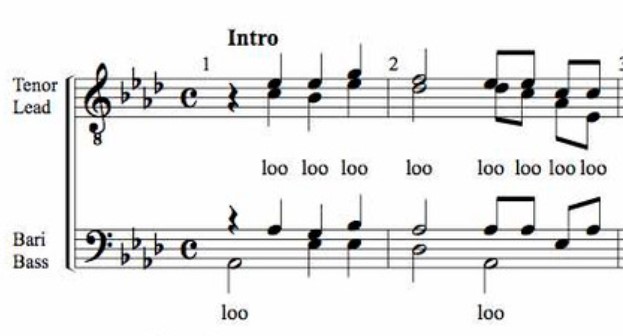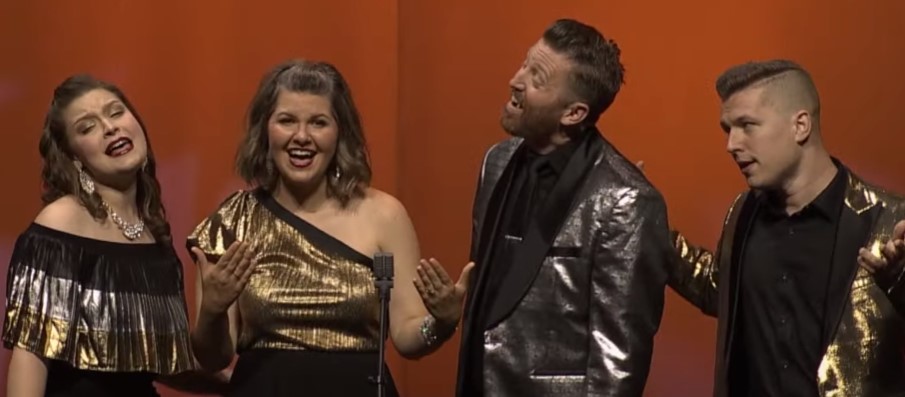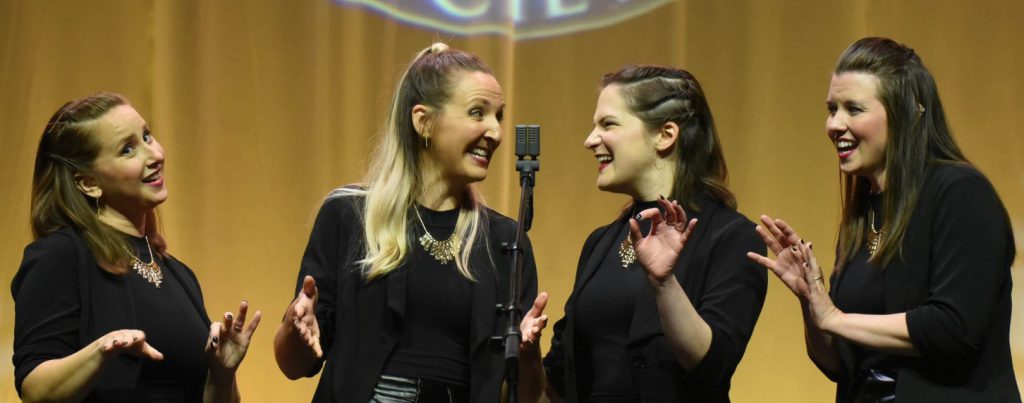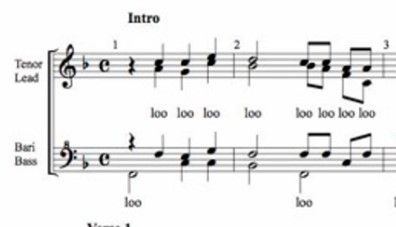Come Sing Now
Learning about Barbershop groups and the arrangements we sing
Quartets and choruses around the world enjoy singing acapella 4-part harmony in the barbershop style. Recently, barbershop groups are breaking away from the traditional “all male” and “all female” groups and forming “mixed groups” – as a result we are finding more and more songs arranged to accommodate the vocal ranges of the singers in the group (quartet or chorus – all women, all men, or mixed).
Barbershop music is melody intensive, having all members start with the melody helps with harmony, since all members learn what they are harmonizing to. Songs are being arranged for choruses and quartets to sing in the barbershop style for men’s voicing (TTBB), mixed voicing (SATB), and for women’s voicing (SSAA). [The abbreviations used, refer to choral or church terms for defining vocal parts: S=Soprano (high notes), A=Alto (mid-range), T=tenor (lower mid-range), B=Bass (low notes).]
UNDERSTANDING 4-PART MIXED ARRANGEMENTS
Our mixed arrangements are written to make good use of very tight chords (notes close to each other). In order to make it easier for each of the parts to “find” their correct notes in those chords, the music is written in two staves (treble and bass).
Treble Staff:
The tenor (highest notes) will always have their “note tails” pointing up.
The lead (melody notes) will always be shown with their tails pointing down.
Bass Staff:
The baritone notes will be written with their tails up in the bass staff.
The bass notes will be written with their tails down in the bass staff.

The four singing parts are:
TENOR – sings the harmony part above the Lead and should have a lighter, clear voice with very little vibrato.
LEAD – usually sings the melody and should have a clear, strong, pleasant voice with a good sense of pitch. Leads sell the song, tell the story!
BARITONE – sings notes above or below the Lead line. Baritone notes complete the 4-part chords and make it “ring.”
BASS – sings the lowest note in the harmony part below the lead and should have a deep voice with a mellow timbre. Basses drive the tempo.
Learning and hearing more about TTBB, SATB, and SSAA
Click on the photos to watch them on YOUTUBE.
Any questions, call or text 541-490-2481 or 541-490-6680





